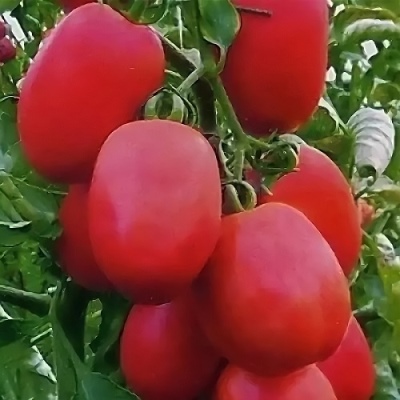
- Authors: Nastenko N.V., Kachainik V.G., Afonina I.M.
- Year of approval: 2013
- Category: grade
- Growth type: determinant
- Appointment: for whole fruit canning
- Ripening period: mid-season
- Ripening time, days: 105-110
- Growing conditions: for open ground, for film greenhouses
- Bush height, cm: 100
- Leaves: large, dark green
Tomatoes bred in the early 2010s have a very solid reputation. But each such culture must be assessed separately in order to exclude the occurrence of errors. It is imperative to study Moscow Cream in order to get a good result.
Description of the variety
Moscow Cream was officially registered in 2013, so it has already been studied quite well. Determinant development is characteristic of culture. Bushes grow up to 1 m. Large dark green foliage is typical.
The main qualities of the fruit
Unripe Moscow Cream berries are green in color and are devoid of spots in the base area. When they reach the necessary maturity, they will acquire a red color. Medium-sized tomatoes weigh 70-90 g. They are typically elliptical and slightly ribbed. Other features:
development from simple inflorescences;
high level of keeping quality;
peduncles without characteristic articulations;
laying of the first inflorescence above the 7th leaf;
laying of subsequent inflorescences every 1 or 2 leaves.
Taste characteristics
The pulp of this variety is fleshy. It is characterized by moderate juiciness. The firm tomato berries are quite sweet. They are recommended to be salted or canned.
Ripening and fruiting
Moscow cream belongs to the category of mid-season tomatoes. Under normal conditions, it will ripen 105-110 days after the first green shoots appear. The berries are picked in July and August. As always, it is impossible to say more concretely without taking into account the characteristics of the season and the very dynamics of plant development.
Yield
The Moscow Cream variety has a very high productivity. The declared ability to produce from 6.8 to 7.5 kg of berries per 1 sq. m. In other sources, the efficiency is mentioned at the level of 8-12 kg. Much here will depend, of course, both on the weather and on agricultural technology.
The timing of planting seedlings and planting in the ground
Seed sowing begins around March 20. It ends with the onset of the second decade of April. With normal development, the seedlings will be ready for transfer to their final location between May 15th and June 5th. It can be said more precisely only when meeting with specific plant specimens.

Growing tomato seedlings is an extremely important process, because it largely depends on whether the gardener can harvest at all. All aspects must be taken into account, from seedbed preparation to planting in the ground.
Landing scheme
The most rational landing is according to the 500x400 mm system. It is she who is recommended by the supplier of planting material. For 1 sq. m it is necessary to have no more than 4 or 5 bushes. It's even better to stick to a lower number so that you can maximize productivity through better care.

Growing and caring
Moscow cream will have to be pinned, regardless of how the gardeners themselves relate to this responsibility. And you will also have to give the bush a certain shape and fix it on the prepared supports. It is recommended to lead a tomato in 2 stems. When the plants are blooming, as well as when the crop is ripe, fertilizing with phosphorus and potassium is necessary. Additionally, it is recommended to use chicken manure diluted 10 times with water.
Seedling care of this variety means:
top dressing with "Krepysh" preparation;
correct lighting (if necessary, using phytolamps);
watering with a spray bottle (this is a more gentle regime than traditional irrigation);
hardening for 1 week before transferring to the open ground.
The main part of the pests is eliminated by simply treating the plantings with a solution of diluted potassium permanganate. In the autumn months, the soil for this variety must be fertilized with compost. Moscow cream does not react well to dry conditions, but excessively active irrigation is also contraindicated for this plant. Usually watering is organized 1 time in 48 hours. Late blight poses a big threat to it.




A plant needs different micronutrients at each stage of growth. All fertilizers can be divided into two groups: mineral and organic. Folk remedies are often used: iodine, yeast, bird droppings, eggshells.
It is important to observe the rate and period of feeding. This also applies to folk remedies and organic fertilizers.


Growing regions
Such a tomato will find a place in the beds:
north and northwest of the European part of Russia;
the center of the European part of Russia;
Ural;
most of Siberia and the Far East;
Volga region;
Chernozem region;
North Caucasus.

























































































